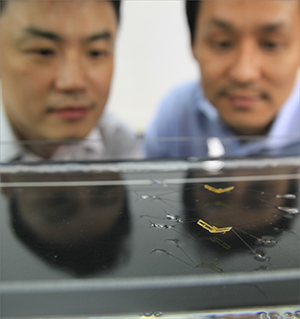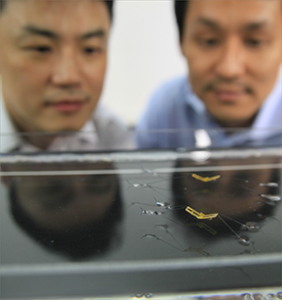
Walking on water sounds like a pretty cool ability to possess. Unfortunately, it doesn’t look like humans will be doing so any time soon, but there is a species of semi-aquatic insects called water striders that skim along the water’s surface and even generate enough upward thrust to launch themselves into the air.
And now robots can do it, too.

Researchers from Seoul National University in Korea (SNU) and Harvard’s Wyss Institute for Biologically Inspired Engineering have developed tiny insect robots that can jump off the water employing the natural mechanics of water striders.
The team discovered that water striders slightly curved tips on their legs and use rotational leg movement to assist them during takeoff from the surface of the water, then mimicked the robot’s traits on these findings.
The robotic insect that they’ve built is capable of exerting up to 16 times its own body weight on the water’s surface without falling through via a method called “torque reversal catapult mechanism” similar to the jumping habits of fleas.
The catapult mechanism works with a burst of momentum and limited thrust to propel the robot off the water. The team used an automatic triggering mechanism that they constructed from composite materials and actuators to initiate the catapult.
They built the robot’s body using a method developed by engineers at the Harvard Paulson School and the Wyss Institute, which they call “pop-up” manufacturing, a layering and folding method that allows for quick build-out of microbots and small devices.
“The resulting robotic insects can achieve the same momentum and height that could be generated during a rapid jump on firm ground – but instead can do so on water – by spreading out the jumping thrust over a longer amount of time and in sustaining prolonged contact with the water’s surface,” said Robert Wood, Ph.D., who is a co–author of the study from the Wyss Institute.
Not only has the robotic development resulted in a bio-inspired robot that performs a new kind of robotic activity, but it has also given researchers new insights into the natural phenomenon of water striding.
Watch the video below for more information.
